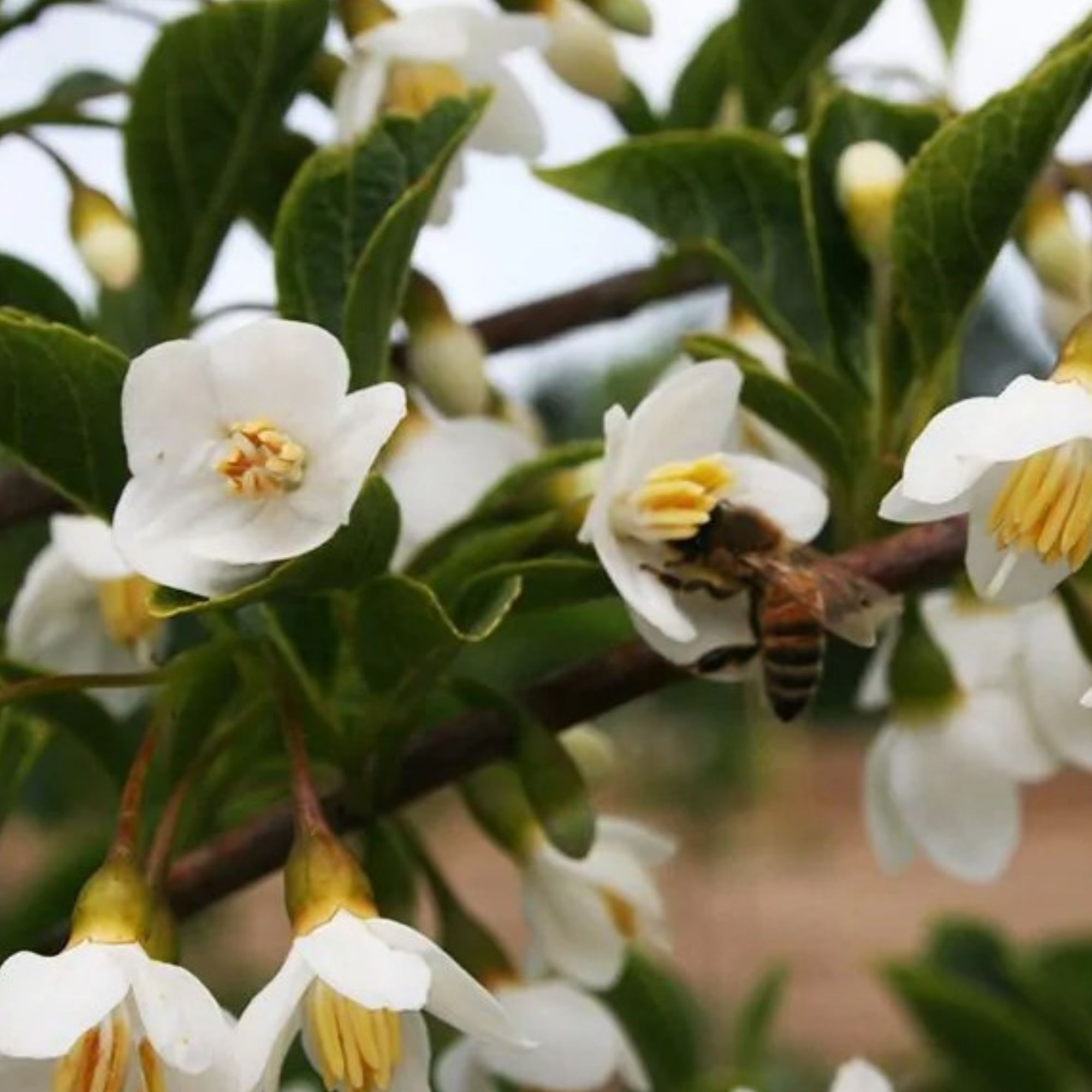Martha Stewart's Japanese snowbell is 'the perfect early summer flowering tree'
Japanese snowbell originates from Asia, but the dainty and beautiful tree thrives in any warm environment, making for a summer backyard staple


While large, voluminous flowers are impossible to miss and undoubtedly make a statement in home gardens, sometimes the daintiest blooms can be the most breathtaking. Case in point: Japanese snowbell. These delicate flowers, originating from their moniker, hang downwards demurely, making for the most serene of garden fixtures. Its petals, ranging in color from soft cream to light pink, contrast beautifully against its vibrant, green leaves.
Martha Stewart is counted among their fans, having recently shared a photo of her own pale pink snowbells to her Instagram page. 'These are the delicate blooms of a Japanese Snowbell, Styrax japonicus,' the pro gardener states in the caption. 'They hang from the branches in May and June giving off a mildly sweet fragrance.'
A post shared by Martha Stewart (@marthastewart48)
A photo posted by on
According to experts, the Japanese snowbell is one of the best fragrant flowers. However, before going ahead and naturally scenting the garden, it should be noted that this blossoming tree thrives in specific environments
'Martha’s beautiful Japanese snowbell tree (Styrax japonicus) is the perfect early summer flowering tree for fragrance and charming blooms,' says garden news writer at Homes & Gardens, Tenielle Jordison. 'This tree is native to eastern Asia and grows best across US hardiness zones 5-8.'
This means that hot, southern states, such as Louisiana and Texas, along with sunny west coast regions like California, are perfectly primed for Japanese snowbell growth.
For those with open gardens and backyards, it's pretty much guaranteed that the Japanese snowbell tree will thrive.
'These trees need plenty of sunlight to achieve a gorgeous display like Martha’s, but they can also adapt well to partial shade in warmer climates,' Jordison explains.
Design expertise in your inbox – from inspiring decorating ideas and beautiful celebrity homes to practical gardening advice and shopping round-ups.
As we can see in the image Stewart posted, it appears that the sun is gently hitting the tree.
As far as Japanese snowbell care and maintenance goes, the protocol is straightforward and manageable. According to Jordison, special attention should be placed on soil health and quality control.
'Make sure to grow Japanese snowbells in well-draining soil and keep moisture levels consistent, without the soil becoming soggy or drying out,' she says. 'If your tree is sitting in oversaturated soil, you may find its foliage will start to discolor. With optimal care, these trees can bloom for many weeks at a time.'
Shop the plant
Japanese snowbells are available to purchase below.

Hannah is Homes & Gardens’ News Editor, with a focus on celebrity style and entertainment content. She got her start in media as a digital editorial assistant at ELLE Canada, and has since written about lifestyle and culture for publications such as Nylon and i-D.
Her love of film is rivaled only by one with a great soundtrack, and she hopes to someday decorate a Nancy Meyers-worthy kitchen.
